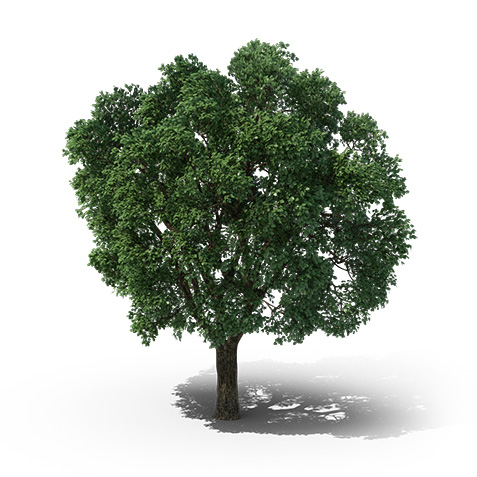Elm Wood
It is believed that the Elm Tree was first introduced to England by Bronze Age farmers. (2000 BC – 700 BC) Despite it being the most common tree in England at one stage., the population of this tree has seriously declined. This is due to the onset of ‘Dutch Elm Disease’ (fungal disease) which has been slowly killing off this tree since the 1960’s. These trees are not overly affected by the cold or frost so their growth speed is much faster than other common trees in the UK.

How To Identify Elm Wood
One of the largest hedgerow trees in England and is often the last tree to come into leaf in the Spring. It is resistant to water so it is a popular choice for a variety of applications.
Here are the key characteristics that will assist in identifying this tree.
English Name – English Elm
Scientific Name – Ulmus procera
Elm Tree Size – 25 – 35m (80 – 130 ft) tall
Trunk Diameter – up to 50 ft 2 metres
Spread – 9-18 m ( 30-60 ft)
Life Span – Average 100 years (known up to 400 years)
UK Location – Southern England
Elm Wood Colour
The wood from this tree is known for having a vibrant, reddish brown colour. This colour does range from tree to tree, some even producing a tone that is more grey colour.
Elm Leaves
Elm leaves tend to be around 4 to 9 centimetres in length. The shape of the leaves are oval and the twigs that hold the leaves are very finely hairy. The edges of each leaf are toothed and the surface of each leaf will be slightly hairy with a rough texture. In the autumn the leaves transform into a stunning and iconic yellow colour.
Elm Wood Texture
The texture of the wood from this tree is coarse with a slightly uneven texture. It is incredibly durable. and is highly resistant to splits and cracking. The grain design can be described as an intricate, interlocking and ‘wavy’ pattern. This makes it a highly popular choice for a range of furniture and other applications. Furthermore, the strength and durability is often selected for it’s ability to stand the test of time.
Location
The Elm tree is native to both Eastern and Southern Europe. In the UK, it is mostly located in the South of England.
Bark
The bark of an Elm tree is very rough to the touch with deep fissures. It is common to find suckers at the base of the tree that grow from the roots. Twigs are short , fine and hairy.
Wood Types Comparison Table
| Wood Type | Appearance | Durability | Finish Options | Best For | Style & Character |
|---|---|---|---|---|---|
| English Character Grade Oak | Knots, splits, grain variation; rustic charm | Extremely durable | Lacquer, Oil, Wax | Farmhouse-style tables, rustic designs | Unique, full of personality |
| Prime English Oak | Clean, uniform grain; minimal knots | Extremely durable | Lacquer, Oil, Wax | Contemporary, refined furniture | Sleek, premium appearance |
| European Oak | Light golden-brown, straighter grain | Very strong and stable | Lacquer, Oil, Wax | Traditional or modern tables | Classic, versatile, timeless |
| Ash | Light cream to pale brown; open grain | Strong, flexible | Lacquer, Oil, Wax | Modern or curved designs | Bright, clean, contemporary |
| Elm | Warm brown, dramatic interlocking grain | Durable, resistant to splitting | Lacquer, Oil, Wax | Statement pieces | Bold, organic character |
| American Walnut | Rich dark browns, subtle grain | Dense, strong | Lacquer, Oil, Wax | Luxury statement furniture | Elegant, refined, premium |
Frequently Asked Questions - Elm Wood
What is Elm wood?
Elm is a hardwood known for its striking grain patterns, interlocking texture, and warm tones. It is prized for its beauty and durability, making it an excellent choice for unique, handcrafted furniture.
How does Elm look compared to Oak or Ash?
Elm has a distinctive swirling or interlocking grain, unlike the straighter patterns of oak and ash. Its colour varies from light brown to rich reddish hues, giving each piece a naturally bold and eye-catching character.
Is Elm a durable hardwood?
Yes. Elm is strong, resilient, and naturally resistant to splitting.
Does Elm wood take finishes well?
Yes. Elm’s grain absorbs oils, waxes, and lacquers beautifully, enhancing its natural depth and highlighting its striking character.
Is Elm heavier or lighter than Oak?
Elm is slightly lighter than oak but still very strong. Its toughness, combined with flexibility, makes it excellent for tables and chairs.
Why should I choose Elm for my table or chairs?
Elm is perfect if you want something truly unique. Its dramatic grain and rich colour variations make every piece of elm furniture one of a kind, blending rustic warmth with luxury craftsmanship.
